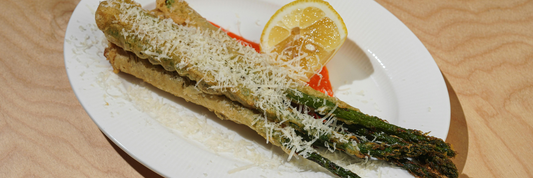Although wheat straw fiber is commonly utilized in daily life, is it a good material for the food industry? See more in the article below with Kimecopak.
What is Wheat Straw Fiber?
Wheat Straw Fiber Definition
Wheat straw fiber is a renewable plant fiber that comes from the leftover portion of the wheat plant after the grain has been harvested. This sustainable material can take the place of other traditional fibers like polyester or cotton fiber.
Natural and less expensive than other natural fibers, wheat straw fiber is an environmentally friendly choice. In addition to the vast volume and quick growth rate of wheat, wheat straw fiber is less expensive than natural fibers like wool or cotton because it is produced from leftovers after harvesting wheat production.
How is Wheat Straw Fiber made?
Wheat straw fiber is processed through a number of stages, such as gathering, cleaning, mechanical processing, chemical treatment, pulping, fiber refinement, drying, processing, and spinning.
Furthermore, one of the natural components that gives wheat straw its malleability is "lignin," which is also present in wheat straw fiber. After breaking down, lignin can mix with other substances to create a moldable material that can be used to create a range of products.
Properties of Wheat Straw Fiber Material
Here is a significant characteristic of wheat straw fiber:
- Sturdy: The lignin in wheat straw makes the fiber very durable.
- Soft and Flexible: Wheat straw fiber can be used to create clothing, blankets, and other textile goods because of its relative softness and flexibility.
- Human interaction with wheat straw fiber is safe.
- Lightweight: Wheat straw fiber is ideal for papermaking because of its low density.
- Insulating qualities: Packaging or construction products might benefit from the thermal insulation qualities of natural fiber.
- Good Moisture Regain: The natural fabric type in question has an excellent capacity to regain moisture. It may both absorb and release moisture from the surrounding air.
- Biodegradable: wheat straw fiber is derived from nature and can break down organically over time.
- Sustainable: Wheat straw fiber is a biodegradable and renewable resource that has minimal environmental impact.
- Versatile: Wheat straw fiber can be applied to a wide range of industries.
Wheat straw fiber can be used as an alternative to synthetic fibers, which are created from raw resources such as petroleum and are based on chemicals or petrochemicals.
Common Uses of Wheat Straw Fiber
In daily life, wheat straw fiber is utilized in a variety of goods. Here are a few examples:
- Textile: The textile industry makes a lot of wheat straw fiber due to its softness, lightness, resilience, and flexibility. To improve the quality of the final product, this natural fiber can be blended with other fibers like cotton and wool.
- Packaging for Food: Wheat straw fiber can be utilized to create food and beverage packaging materials because it is quite sturdy, safe for humans, and insulating. Many different kinds of food packaging made of wheat straw fiber are available on the market, including lunch boxes, dishes, utensils and more.
- Papermaking: Wheat Straw Fiber is used in the manufacturing of paper products such as printing paper, writing paper, and wrapping paper, among others.
- Building materials: Lightweight construction blocks, ceiling tiles, insulation panels, and ceiling properties can be all made from wheat straw fiber.
- Furniture and home décor: Chairs, tables, and decorative components can all be made with natural fibers derived from wheat straw.
Wheat straw fiber is utilized in the manufacture of bioplastics, composite materials, automobile components, and other products in addition to the ones listed above.
The Difference Between Wheat Straw Fiber vs Other Materials
Cotton and wool, in addition to Wheat Straw Fiber, are two forms of natural fibers. With synthetic fibers, here is a detailed comparison table of these four:
|
Property |
Wheat Straw Fiber |
Cotton |
Wool |
Synthetic Fibers |
|
Biodegradability |
Biodegradable |
Biodegradable |
Biodegradable, but can take longer |
Not biodegradable |
|
Biocompatibility |
Biocompatible |
Biocompatible |
Biocompatible |
Not biocompatible |
|
Renewable resource |
Renewable resource |
Renewable resource |
Renewable resource |
Not renewable resource |
|
Cost |
Generally more affordable |
Generally more expensive |
Generally more expensive |
Generally less expensive |
|
Softness and flexibility |
Soft and flexible |
Very soft and flexible |
Soft and flexible, but can be itchy |
Can vary depending on the fiber |
|
Moisture regain |
Good moisture regain |
Good moisture regain |
Good moisture regain |
Can vary depending on the fiber |
|
Versatility |
Can be used in a variety of applications |
Can be used in a variety of applications |
Can be used in a variety of applications |
Can be used in a variety of applications |
|
Sustainability |
Sustainable alternative to synthetic fibers |
Sustainable alternative to synthetic fibers |
Sustainable alternative to synthetic fibers |
Not sustainable |

What Are Advantages of Wheat Straw Fiber for Environments?
Wheat straw fiber bring various benefits for environments.
Renewable Resource
Wheat straw fiber is a sustainable resource that is continuously generated as a byproduct of wheat cultivation. By using wheat straw fiber, one can lessen their reliance on limited resources and lessen their influence on the environment. For example, the fiber from a wheat straw can lessen the need for synthetic fibers, which are derived from chemicals or petrochemicals and are manufactured from materials like petroleum.
Biodegradability
Over time, wheat straw fiber can decompose spontaneously. Synthetic fiber products can endure for generations, while wheat straw fiber breaks down faster and doesn't release any dangerous elements into the environment. As a result, less garbage goes into the environment and related problems including contamination of the soil and water are reduced.
Carbon Footprint Reduction
Wheat straw is a byproduct of wheat harvest, and leftovers from wheat harvest, which are typically burned, emit carbon dioxide into the atmosphere. Turning wheat straw into wheat straw fiber helps to lower emissions from wheat straw burning.
Furthermore, producing wheat straw fiber consumes less energy than making plastic, lowering the carbon footprint.
How is Wheat Straw Fiber used Food and Beverage Packaging?
Wheat straw fiber is commonly utilized in food and beverage packaging because to its exceptional characteristics.
Many types of food packaging, including reusable and disposable options, are made with wheat straw fiber.
- Disposable food packaging produced from wheat straw fiber includes cups and containers, straws, cutlery, packaging inserts, labels, and wraps. Each one of them is strong, lightweight, leak-proof, and works well with a variety of foods and beverages. Typically, these single-use packing products are industrial compostable.
- Reusable food packaging made from wheat straw fiber commonly used is water bottles, food containers, travel mugs, plates and bowls, cutlery sets. These packaging can be easily clean and stored reused.
Packaging made of wheat straw fiber is flexible, durable, waterproof, and works well with a variety of foods. Some foods that go well with wheat straw fiber are as follows:
- Hot and cold beverage: including hot, cold drinks like coffee, tea, smoothies, juices, …
- Dry snacks and treats: crackers, cookies, popcorn, granola bars, or trail mix.
- Fresh fruits and vegetables
- Baked goods: muffins, cookies, bread, cakes, …
- Frozen foods: including ice cream, frozen yogurt or frozen meals
- Condiments and sauces like ketchup, mustard, salad dressing, and dips.
Why Food Business Should Choose Wheat Straw Fiber Packaging?
Here are some benefits for business when using wheat straw fiber packaging:
-
Cost-Effectiveness: Packaging made of wheat straw fiber is typically less expensive when compared to other environmentally friendly packaging materials like bamboo or recycled paper. Because of its affordability, it's a good option for companies looking to lessen their environmental footprint without having to make big financial commitments.
- Enhanced Brand Image: Customers are looking for greener products more and more, and they like brands that put sustainability first. Selecting packaging made of wheat straw fiber shows your dedication to ecologically responsible business operations, improving your brand's reputation and attracting eco-aware customers.
- Durability and Versatility: Packaging made of wheat straw fiber is strong; it can resist storage and transportation without losing its original shape. Because of its adaptability, it may be shaped and sized to fit a wide range of food and drink packaging requirements.
- Food Safety Compliance: Packaging made of wheat straw fiber complies with food safety laws and doesn't give food goods any unwanted tastes or smells. It is appropriate for a range of food and drink products, guaranteeing both customer safety and product quality.
Limitation of Wheat Straw Fiber for Business
Although there are numerous advantages, businesses should consider the following factors before switch to this type of material:
- Limited barrier properties: In terms of barrier qualities, wheat straw fiber is less efficient than traditional plastic packaging. It could allow some moisture and oxygen to pass through, which might shorten the shelf life of some food items.
- Water sensitivity: When exposed to too much moisture, wheat straw fiber can get mushy and drenched. This may not be appropriate for products with a high moisture content and may compromise the packaging's structural integrity.
- Heat sensitivity: Wheat straw fiber is heat sensitive and may not be appropriate for packaging products that need to be steamed or cleaned at high temperatures.
- Cost: Wheat straw fiber may cost more than typical plastic packaging, although it is generally less expensive than certain other sustainable packaging solutions.
- Consumer perception: Even while more people are becoming aware of the benefits of sustainable packaging, some may still be skeptical about wheat straw fiber's performance or durability when compared to more traditional plastic packaging.
In brief, Wheat Straw Fiber has numerous exceptional properties and is used in a variety of areas, including food and beverage. However, before shifting to wheat straw-based products, firms must develop an appropriate strategy.




